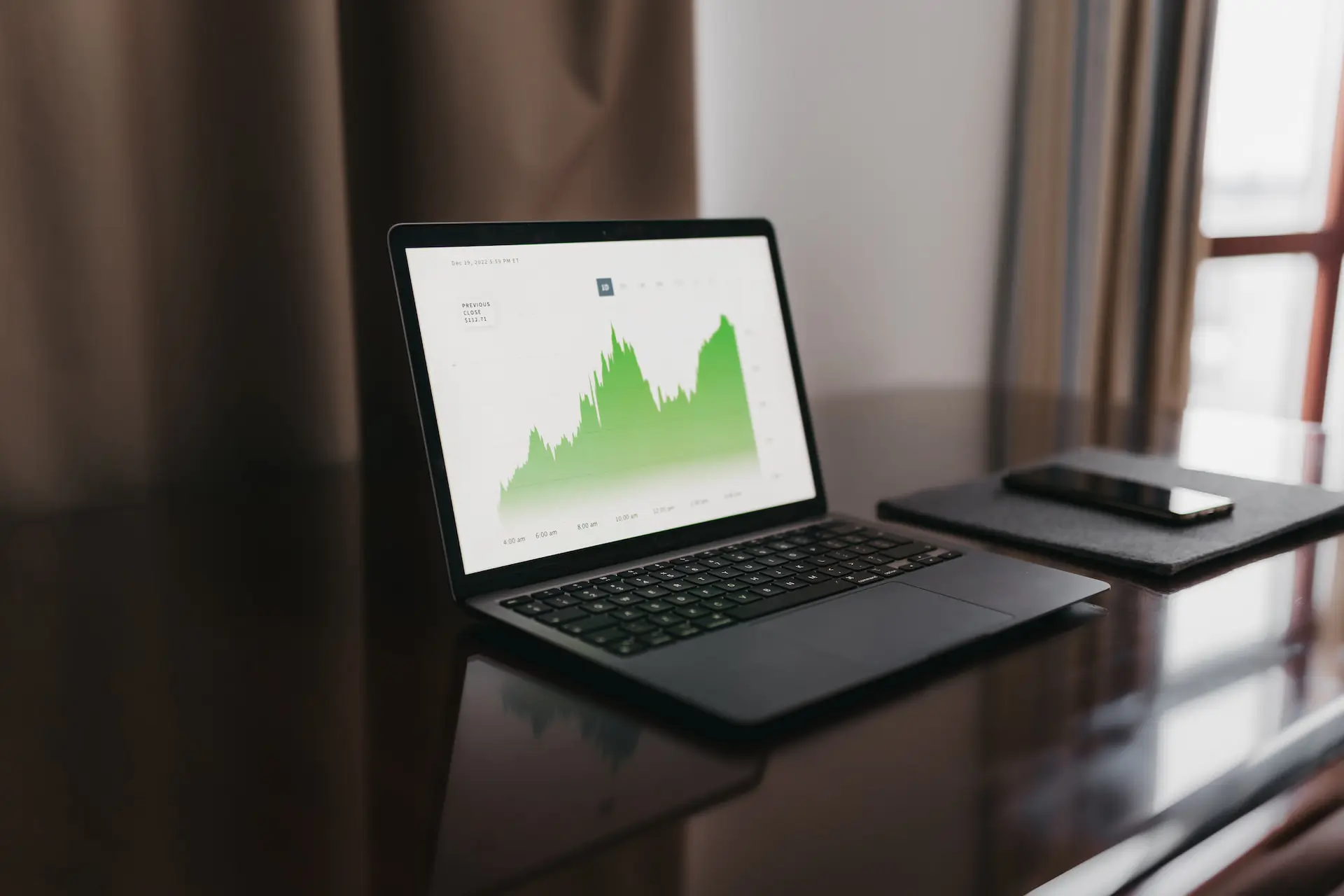SEO metrics are quantitative indicators that help you evaluate the performance of your website and its content in relation to your SEO goals and objectives. They provide you with valuable insights into how your website is ranking, how users are interacting with it, and how it is contributing to your business outcomes.
However, not all SEO metrics are equally important. Some metrics are more relevant and meaningful than others, depending on your industry, niche, audience, and goals. Some metrics are more actionable and useful than others, depending on your resources, tools, and capabilities.
By tracking these SEO metrics, you can identify the strengths and weaknesses of your SEO strategy, and make data-driven decisions to improve it. You can also monitor the progress of your SEO campaigns and report on the results to your stakeholders.
Organic Traffic
Organic traffic is the number of visitors that come to your website from unpaid search results. It is one of the most important local SEO metrics because it reflects the quality and quantity of your website content and how well it matches the search intent of your target audience.
Why it’s important to track:
Organic traffic is a key indicator of your website’s visibility and popularity on search engines. It shows you how many people are finding your website through relevant keywords and phrases, and how interested they are in what you have to offer.
Tracking organic traffic benefits
- Evaluate the performance of your SEO strategy and campaigns
- Identify the most popular pages and topics on your website
- Discover new keywords and content opportunities
- Analyze the behavior and preferences of your organic visitors
- Optimize your website for user experience and conversions
How to track organic traffic?
You can track organic traffic using various tools and platforms, such as:
- Google Analytics: Google Analytics is a free web analytics tool that allows you to measure and analyze various aspects of your website traffic, including organic traffic. You can access organic traffic data by going to Acquisition > All Traffic > Channels > Organic Search. You can also segment organic traffic by source, landing page, device, location, etc.
- Google Search Console: Google Search Console is a free tool that helps you monitor and improve your website’s performance on Google search. You can access organic traffic data by going to Performance > Search Results. You can also filter organic traffic by query, page, country, device, etc.
- SEMrush: SEMrush is a paid SEO tool that allows you to conduct keyword research, competitor analysis, site audit, rank tracking, and more. You can access organic traffic data by going to Domain Analytics > Overview. You can also compare organic traffic with other channels, such as paid search, social media, etc.
Keyword Rankings
Keyword rankings are the positions of your website pages on search engine results pages (SERPs) for specific keywords or phrases. They show you how well your website is optimized for the keywords that are relevant to your niche and audience.
Why it’s important to track:
Keyword rankings are important because they affect the visibility and click-through rate (CTR) of your website on search engines. The higher your website ranks for a keyword, the more likely it is to be seen and clicked by users who are searching for that keyword.
Tracking keyword rankings benefits
- Evaluate the effectiveness of your keyword research and optimization
- Identify the keywords that are driving the most traffic and conversions to your website
- Discover new keyword opportunities and gaps
- Monitor the competition and their ranking strategies
- Adjust your SEO strategy based on ranking fluctuations
How to track keyword rankings
You can track keyword rankings using various tools and platforms, such as:
- Google Search Console: Google Search Console allows you to see the average position of your website pages for various queries on Google search. You can access keyword ranking data by going to Performance > Search Results > Average Position. You can also filter keyword rankings by query, page, country, device, etc.
- SEMrush: SEMrush allows you to track the ranking positions of your website pages for various keywords on different search engines and locations. You can access keyword ranking data by going to Position Tracking > Overview. You can also compare keyword rankings with competitors, track ranking changes over time, etc.
- Ahrefs: Ahrefs is a paid SEO tool that allows you to conduct backlink analysis, keyword research, site audit, rank tracking, and more. You can access keyword ranking data by going to Rank Tracker > Overview. You can also see keyword rankings by difficulty, volume, CTR, etc.
Bounce Rate
Bounce rate is the percentage of visitors who leave your site after viewing only one page. It indicates how engaging and relevant your content is for your audience. A high bounce rate can be a concern because it means that your visitors are not finding what they are looking for on your site, or they are not interested in exploring more of your content. This can affect your SEO ranking, as search engines may consider your site as low-quality or irrelevant.
To reduce your bounce rate, you need to create content that matches the intent of your visitors, provide clear navigation and calls to action, and optimize your site speed and design. You can track your bounce rate using Google Analytics, which will show you the average bounce rate for your site, as well as the bounce rate for each page and source of traffic.
Page Load Time
Page load time is the time it takes for your site to load completely on a browser. It is a crucial factor in SEO, as it affects both user experience and search engine ranking. Users expect fast-loading sites and will abandon sites that take too long to load. Search engines also favor fast-loading sites and penalize slow-loading ones.
To improve your page load time, you need to optimize your images, videos, and other media files, use a caching plugin or service, minimize HTTP requests and redirects, and use a content delivery network (CDN). You can measure your page load time using tools like Google PageSpeed Insights, GTmetrix, or Pingdom, which will also give you suggestions on how to improve it.
Backlinks
Backlinks are links from other websites that point to your site. They are one of the most important SEO metrics, as they signal to search engines that your site is trustworthy, authoritative, and relevant. The more quality backlinks you have, the higher your site will rank on search engines.
To track your backlinks, you need to use tools like Google Search Console, Moz Link Explorer, or Ahrefs Backlink Checker, which will show you the number and quality of backlinks you have, as well as the domains and pages that link to you. You can also use these tools to find new backlink opportunities and monitor your competitors’ backlink profiles.
Mobile Traffic
Mobile traffic is the percentage of visitors who access your site from mobile devices, such as smartphones or tablets. It is a vital SEO metric in today’s digital age, as more and more people use mobile devices to browse the web. Search engines also favor mobile-friendly sites and rank them higher on mobile searches.
To track your mobile traffic, you can use Google Analytics, which will show you the percentage of mobile traffic for your site, as well as the devices, operating systems, browsers, and screen resolutions used by your mobile visitors. You can also use Google Mobile-Friendly Test to check if your site is mobile-friendly and get suggestions on how to improve it.
Click-Through Rate (CTR)
Click-through rate (CTR) is the percentage of users who click on your site’s link from a search engine results page (SERP). It indicates how attractive and relevant your title tag and meta description are for your target keywords and audience. A high CTR means that more users are interested in visiting your site from a SERP.
To improve your CTR, you need to write compelling title tags and meta descriptions that include your target keywords, match the intent of the users, and entice them to click on your link. You can track your CTR using Google Search Console, which will show you the average CTR for your site, as well as the CTR for each keyword and page.
Domain Authority
Domain authority (DA) is a score from 0 to 100 that measures the overall quality and reputation of your site based on various factors, such as backlinks, content quality, social signals, and more. It is a relative metric that compares your site with other sites in your niche or industry. A high DA means that your site is more likely to rank higher on search engines than sites with lower DA.
To increase your DA, you need to build more quality backlinks from authoritative sites in your niche or industry, create valuable and engaging content that attracts social shares and comments, and optimize your site’s technical aspects such as speed, security, and structure. You can check your DA using tools like Moz Domain Analysis or Ahrefs Site Explorer.
Conversion Rate
One of the most important SEO metrics to track is the conversion rate. This is the percentage of visitors who take a desired action on your website, such as filling out a form, subscribing to a newsletter, or making a purchase. The conversion rate reflects how well your website is meeting the needs and expectations of your target audience, and how effectively you are persuading them to take action.
Role of SEO in improving conversion rate
SEO plays a crucial role in improving the conversion rate of your website. By optimizing your site for relevant keywords, user intent, site speed, mobile-friendliness, and user experience, you can attract more qualified traffic and increase the chances of converting them into customers. SEO also helps you build trust and credibility with your audience, which can influence their decision-making process.
How to track conversion rate?
To track the conversion rate of your website, you need to define your conversion goals and set up tracking tools. You can use Google Analytics to measure how many visitors complete a specific goal, such as filling out a contact form or downloading an ebook. You can also use Google Search Console to see how many clicks and impressions your site gets from organic search results, and how they relate to your conversions. You can also use other tools such as heatmaps, surveys, and user testing to understand how users interact with your site and what factors affect their conversion behavior.
Recap of the importance of tracking these SEO metrics
These SEO metrics can help you measure the performance of your SEO strategy, identify areas of improvement, and optimize your site for better results. By tracking these metrics regularly, you can gain valuable insights into your audience, your competitors, and your market, and adjust your SEO tactics accordingly. Remember that SEO is not a one-time thing, but a continuous process that requires constant monitoring and refinement. We hope this article has helped you understand the importance of tracking these SEO metrics and how to do it effectively.



